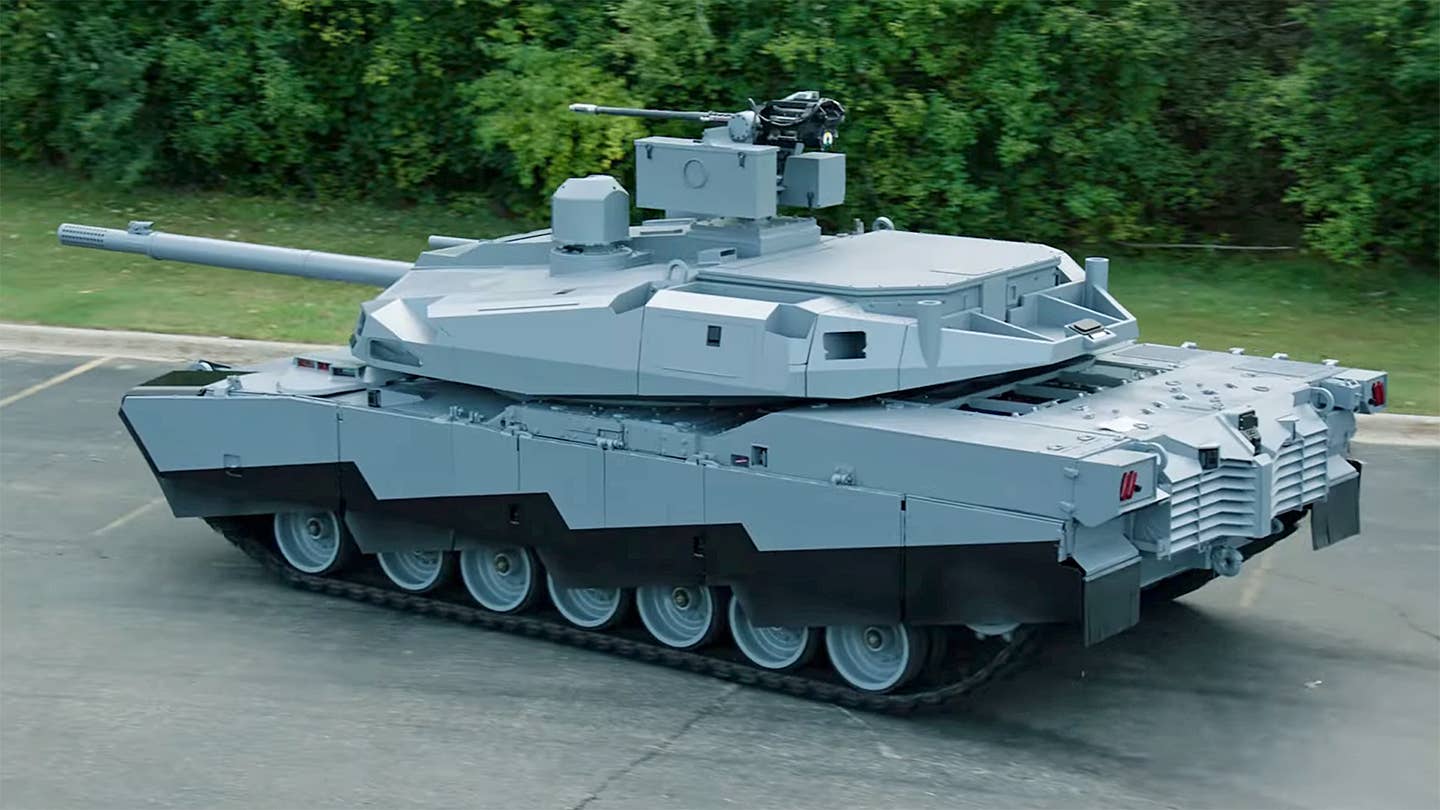Videos of Russia’s next-gen Main Battle Tank (MBT), the T-14 Armata, have surfaced online, with some speculating that the tank has been deployed in Ukraine. The US, meanwhile, has officially unveiled its AbramsX tank.
Certain Russian media outlets had earlier reported that the T-14 was spotted near the village of Midginskaya in Luhansk.
However, according to experts, the video of the tank was reportedly filmed at a training ground in Kazan, the capital of the Russian Republic of Tatarstan.
Another video of a T-14 Armata tank in Kazan. 3/https://t.co/z1vt3OGgjs pic.twitter.com/vTQ0GEHbCO
— Rob Lee (@RALee85) October 7, 2022
A single T-14 was reportedly sighted on October 8 near the village of Midginskaya in Luhansk. Armata’s deployment comes at a time when Russia is escalating its offensive in Ukraine through mass mobilization, missile strikes on the country, and possibly opening a second land front through Belarus.
The latest videos of the T-14 have led to speculations that the tank could soon be deployed in Ukraine; however, some experts that EurAsian Times talked to said there is no such indication.
T-14 Armata
The T-14 Armata has been developed by UralVagonZavod, a subsidiary of the Russian state-owned defense conglomerate, Rostec. It was first unveiled at the Moscow Victory Day Parade in May 2015.
The tank is based on the ‘Armata’ Universal Combat Platform, a next-generation modular heavy military tracked vehicle platform. It can also be used to build additional armored vehicles, including large infantry fighting vehicles (IFVs) and armored personnel carriers (APCs).

The T-14 features digitized technology and three compartments, which include the hull with three crew members at the front, the unmanned remote-controlled turret weapons station in the middle, and the powerplant in the rear.
There are three hatches at the front of the hull, with the driver on the left, the gunner in the middle, and the tank commander on the right. The three-man crew is seated in a unique armored capsule.
The unmanned turret on the T-14 Armata is armed with a 125mm 2A82-1M smoothbore cannon with an automatic loader. There are 45 rounds of ammo in the turret, including 32 rounds ready to use. The main gun can also fire laser-guided missiles ranging between seven to 12 kilometers.

The 2A82 125mm gun can be replaced with a new 2A83 152mm gun in the future which can reportedly fire a new guided missile capable of breaking through the armor that is twice as thick as that of the American Abrams tank.
For protection, the T-14 is equipped with the Active Protection System (APS) to intercept and destroy incoming missiles. The T-14’s APS can reportedly defend against all types of anti-tank missiles.
Also, the tank has reactive armor in the front and bar armor in the rear for additional protection against anti-tank rocket-propelled grenades (ATRPGs). Additional active and passive armor can be provided to the tank if needed.
Furthermore, the tank is fitted with NBC (nuclear, biological, and chemical) protection, an automatic fire suppression system, and smoke grenade dischargers.
Russia Has Offered Its T-14 Tank To India
Last year, Russia offered India to jointly develop a new battle tank based on its T-14 Armata platform shortly after the Indian Army issued a Request for Information (RFI) to acquire 1,770 Future Ready Combat Vehicles (FRCVs) by 2030.
These FRCVs could replace the Russian-made T-90 Bhishma and T-72 Ajeya tanks, India’s main battle tanks.
According to the RFI, the proposed FCRV would have “state-of-the-art,” “technology-enabled,” and “high mobility” qualities, as well as the capacity to operate in a variety of terrains, including high altitude zones, plains, riverine borders, and deserts.
The new FCRVs are supposed to help India counter the Chinese-made Type 15 light tank along the disputed border.
As per a previous analysis by EurAsian Times, the Russian-made T-14 can operate in temperatures as low as -50 degrees Celsius, equipped with mobile power stations that ensure an immediate and smooth engine start even in freezing weather.
This can be very advantageous for India, considering these tanks could be deployed in extremely cold regions like Eastern Ladakh, where temperatures can go down to -40 degrees celsius in the winter.
New Generation Of Abrams MBT Also Unveiled
Experts suggest the T-14 is Russia’s answer to the US-made M1 Abrams third-generation battle tanks, which destroyed 37 Soviet-designed T-72 tanks during the 1991 Gulf War.
However, the US military could soon have a response to the T-14, as the next generation of Abrams Main Battle Tanks has also arrived.

General Dynamics Land Systems (GDLS) has officially unveiled its AbramsX future main battle tank in the latest video released by the company on October 8.
IT'S ALIVE! A main battle tank for the next generation, the AbramsX technology demonstrator features reduced weight for improved mobility and transportability, delivering the same tactical range as the M1A2 Abrams with 50% less fuel consumption. #GDatAUSA #AUSA2022 #TeamAbrams pic.twitter.com/7PdpGnuPJT
— General Dynamics Land Systems (@GD_LandSystems) October 8, 2022
Similar to the T-14 Armata, the new AbramsX also features an unmanned turret with an auto-loading ammunition system and a reduced crew size, down from four to three.
The new Abrams is said to have the ability to team up with unmanned ground vehicles. Also, it features a hybrid powertrain which results in 50% fuel savings, according to claims made by General Dynamics.
The hybrid system will also enable the AbramsX to operate silently when stationary and possibly for short durations at low speed, which could be tactically advantageous on the battlefield.
That said, many details about this new Abrams configuration remain unknown.
- Contact the author at tanmaykadam700@gmail.com
- Follow EurAsian Times on Google News




